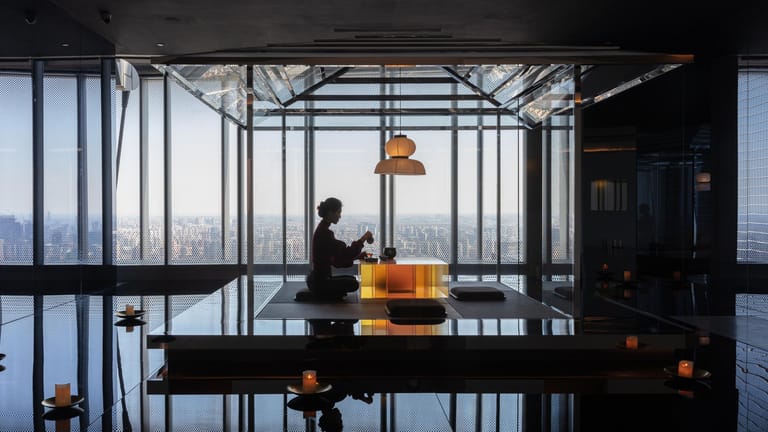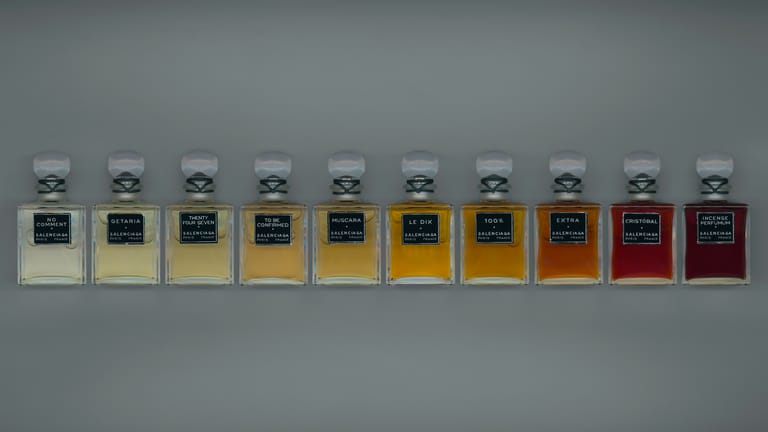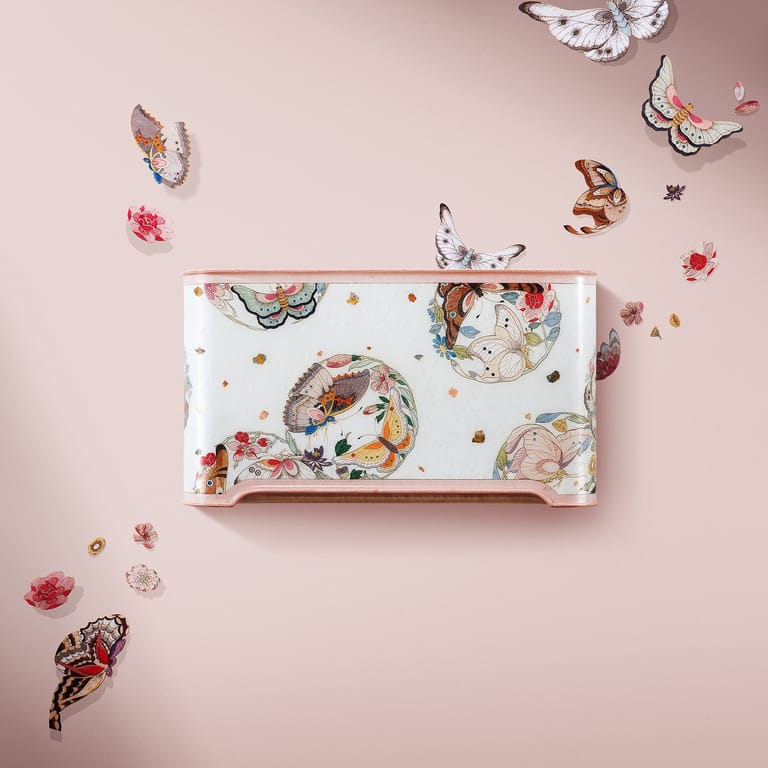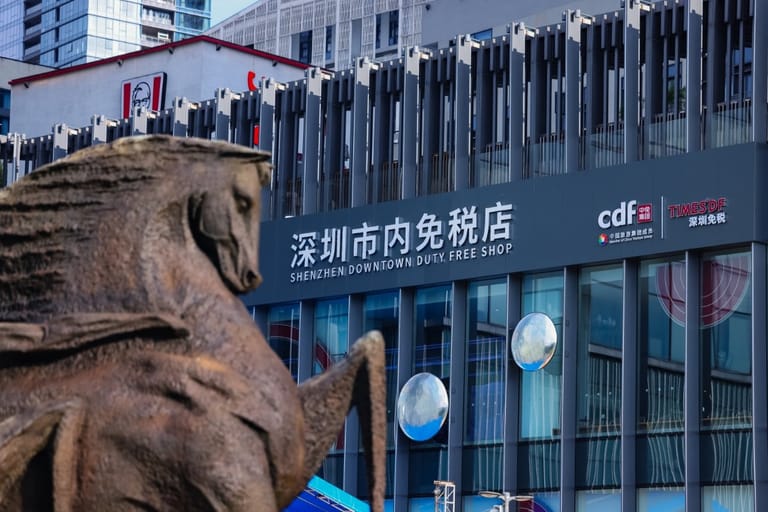The Neo-Luxury Frontier: Where Fragrance Meets Fashion
By
Anqi Wen
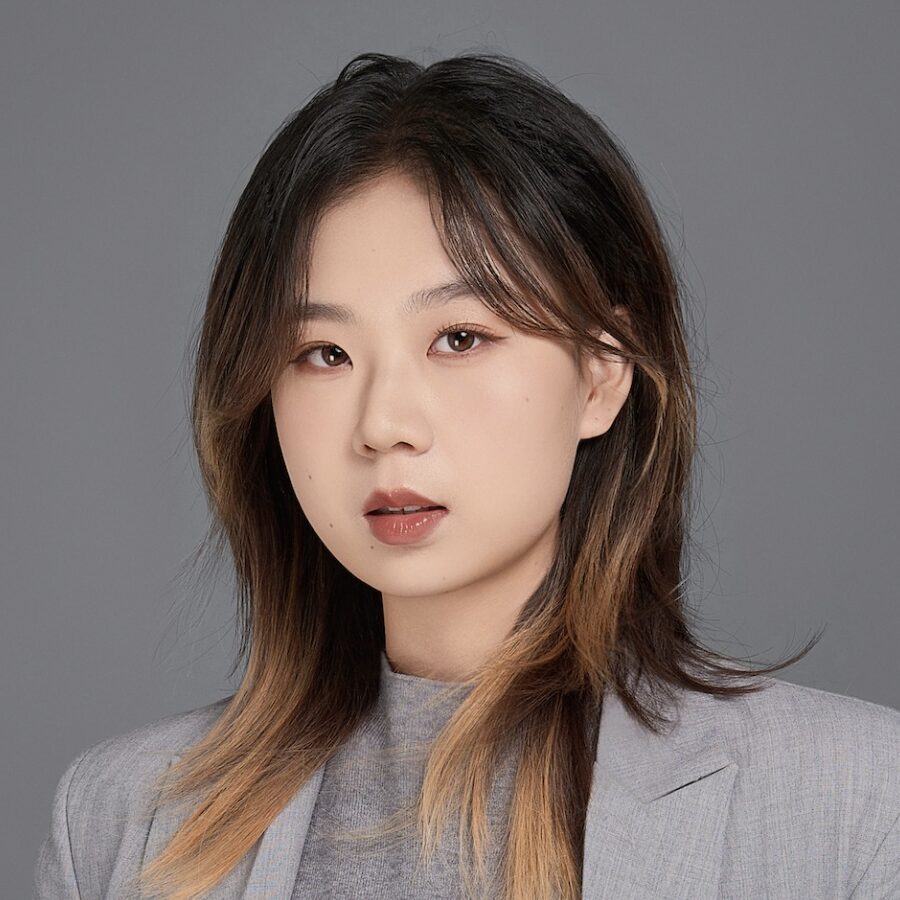
Published on
April 1, 2025
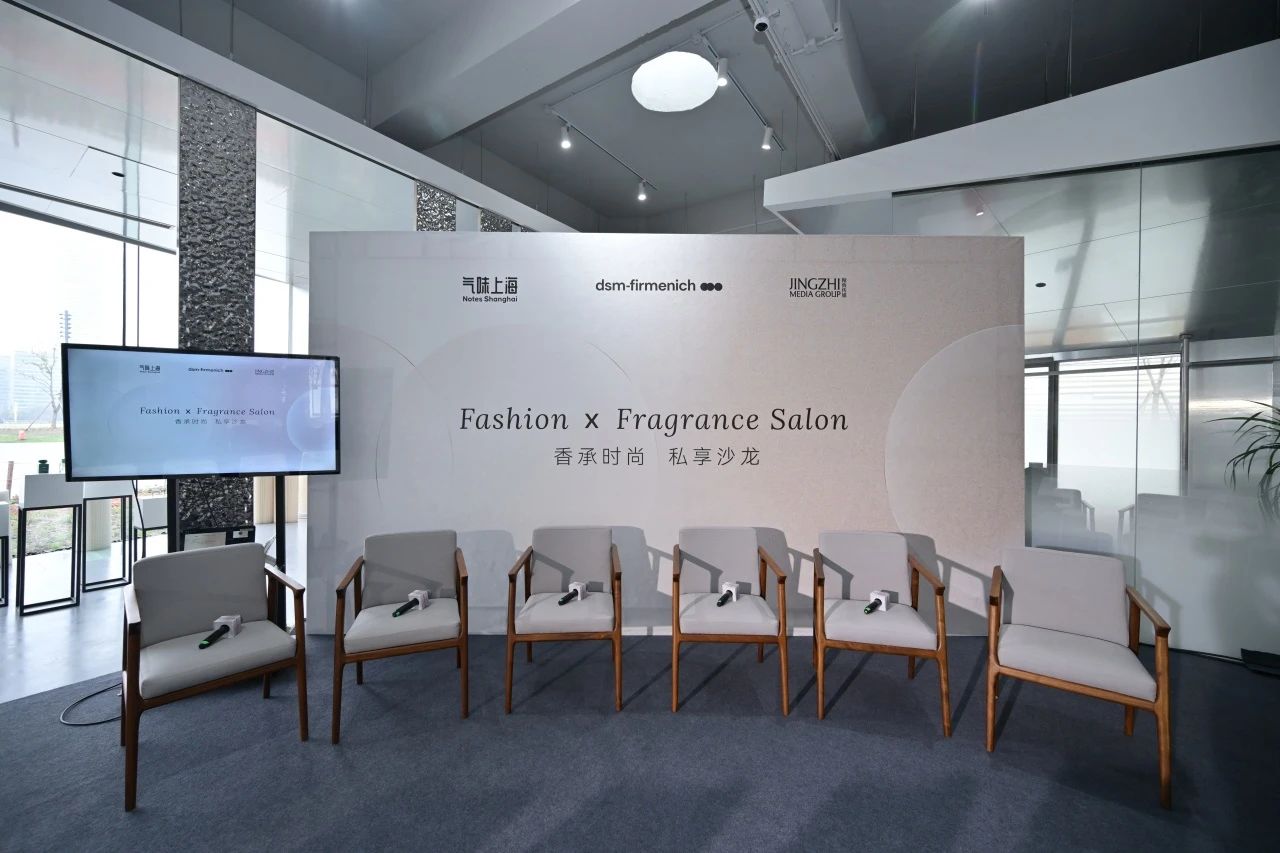
As Shanghai Fashion Week and Notes Shanghai unfolded in Spring, cross-industry collaborations took center stage. On March 27 and 29, Jingzhi Media Group partnered with DSM-Firmenich and Notes Shanghai to host two fragrance-focused events: “Fashion x Fragrance Salon” and “Fashion x Fragrance: A Scent Manifesto,” fostering a dialogue between fashion and scent.
The first event catered to fragrance industry professionals and brand executives, offering a platform for in-depth discussion. The second explored fragrance creativity and future trends. Both featured roundtable discussions with key industry figures, analyzing the evolving dynamics of the fragrance sector.
As an organizer and panelist, Jingzhi Media Group bridged fashion and fragrance, curating insightful conversations that drive innovation at the intersection of these industries.
Decoding the Fashion-Fragrance Connection
The “Fashion x Fragrance Salon” opened with a speech by Olivier Viejo, VP of Fine Fragrance APAC at DSM-Firmenich, and a keynote by Angelina Yu, Senior Marketing Manager at DSM-Firmenich. Tracing fragrance’s evolution from haute couture’s early 20th-century ventures to today’s niche perfume boom, the discussion underscored the enduring connection between fashion and scent. She noted, “Luxury has shifted from ‘who I aspire to be’ to ‘how I want to express myself.’” This shift is redefining fragrance creation and its role in fashion.
Moderated by Jingzhi Media Group’s Editorial Director Agnes Wu, the two panel sessions featured industry leaders, including Luc Berriet, Senior Perfumer Evaluator APAC at DSM-Firmenich; Simon Collins, DIIS Chief Creative Officer and former Dean of Parsons; perfumer Steve Guo; Weini Weng, CEO of Altavia China; sensory artist Zi Wang; fashion blogger Chen Zhou; author and translator Echo Gu; Editorial Director of Wallpaper China Menswear Anson Chen; brand consultant Yang Shu; and knitwear designer Hanqing Ding.
In the panel “Fragrance in Fashion: Unlocking New Business Opportunities,” Berriet likened fragrance creation to storytelling. Through collaborations with international designers, he noted that scent extends the emotional language of fashion, reinforcing a brand’s identity while enhancing sensory experiences.
Fashion houses often draw from their core DNA—fabric, tailoring, design ethos—to craft olfactory signatures. Iconic fashion fragrances like Calvin Klein ONE and Maison Margiela Replica resonate not just as products but as style statements.
However, Collins argued that in today’s fast-evolving market, brand heritage alone no longer guarantees success. He emphasized that the most compelling fragrances stem from personal creativity rather than market-driven formulas. “There are already enough clothes and perfumes in the world. What we need is added value,” he stated.
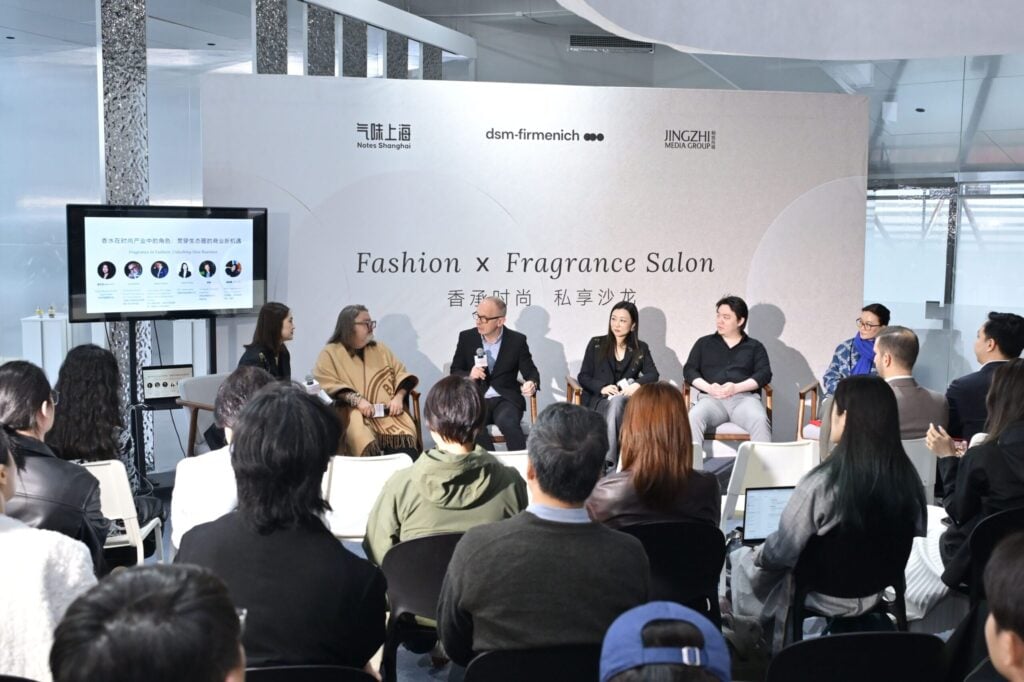
The Modern Expression of Chinese Fragrance
For fashion brands, balancing commercial viability with distinctive storytelling is crucial to profitability.
“The key is to craft a narrative that fills the emotional gaps left by core product lines,” said Shu. Brands must identify olfactory expressions aligned with their essence while ensuring market differentiation.
Cultural memory also plays a role in fragrance selection. At the second panel, “Decoding Scent Fashionization: Ingredient Innovation, Collaboration, and Eastern Identity,” the challenge of modernizing traditional Chinese scents took center stage.
“Fragrance, like fashion, marks personal milestones,” said Ding. Just as people choose special attire for significant life events, scent carries memories. Successful Chinese fragrances must balance cultural heritage with contemporary appeal.
Guo identified two key opportunities for Chinese fragrance development: innovating traditional ingredients for modern consumers and deepening cultural narratives so that scents serve as carriers of heritage rather than just sensory products. He concluded that China’s rich storytelling tradition and creative resources could foster a unique fragrance ecosystem distinct from Western markets.

Sustainability, Digitalization, and Designer-Led Fragrance
At the “Fashion x Fragrance: A Scent Manifesto” panel on March 29, Jingzhi Media Group joined discussions led by Collins, featuring Berriet, former Maison Margiela CEO Giovanni Pungetti, digital artist and accessories designer Percy Lau, fashion designer Kun Lu, and Editorial Director Agnes Wu. The conversation explored the unique fragrance landscape in China.

Discussing cross-cultural fragrance development, Berriet shared insights from his work in Europe, Singapore, and Shanghai. He noted that Asian consumers favor minimalist scent structures and prioritize ingredient quality and cultural resonance. China’s rich tea traditions and affinity for woody notes offer fertile ground for brand exploration.
Consumer habits are also evolving. Wu highlighted the rise of “self-pleasure” fragrance consumption: “Sophisticated consumers now wear scent for personal enjoyment, even outside social settings.” This signals a shift from fragrance as a social marker to a more intimate, individualized experience.
Sustainability was another key theme. While environmental responsibility is gaining traction in the fragrance industry, panelists agreed that consumer willingness to pay a premium remains uncertain. Brands must balance sustainability with commercial viability. Additionally, digital storytelling and visual branding will be crucial in integrating sustainability beyond raw material choices, embedding it within emotional narratives and consumer experiences.
These discussions illustrate how fashion and fragrance are no longer just intersecting but co-evolving and China’s creative scene is carving out a distinct identity in the global luxury landscape. With authentic cultural narratives, evolving consumer preferences, and a growing emphasis on sustainability, the market is no longer just adopting trends—it’s setting them. As brands navigate this transformation, the intersection of scent and style will continue to be a space for innovation, storytelling, and new commercial opportunities.






